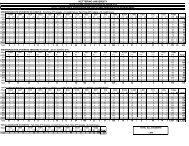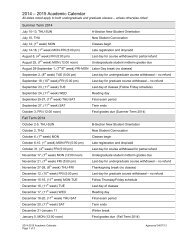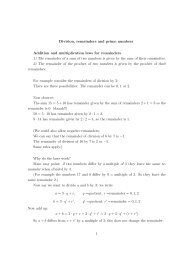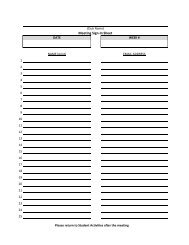1 CLASS LECTURE NOTES - What is Applied Statistics ...
1 CLASS LECTURE NOTES - What is Applied Statistics ...
1 CLASS LECTURE NOTES - What is Applied Statistics ...
Create successful ePaper yourself
Turn your PDF publications into a flip-book with our unique Google optimized e-Paper software.
3. Scatter plot: Construct x-ax<strong>is</strong> and y-ax<strong>is</strong> that cover the ranges of two variables. Plot (x i , y i ) points<br />
for each observation in the data set.<br />
18<br />
4. H<strong>is</strong>togram: Th<strong>is</strong> <strong>is</strong> a bar graph, where the data <strong>is</strong> grouped into many classes. The x-ax<strong>is</strong><br />
corresponds to the classes and the y-ax<strong>is</strong> gives the frequency of the observations.<br />
5. Stem-and-leaf plot: Data <strong>is</strong> plotted in such a way the output will look like h<strong>is</strong>togram and also<br />
features a frequency d<strong>is</strong>tribution. The idea <strong>is</strong> to use the digits of the data to illustrate its range, shape<br />
and density. Each observation <strong>is</strong> split into leading digits and trailing digits. All the leading digits are<br />
sorted and l<strong>is</strong>ted to the left of a vertical line. The trailing digits are written to the right of the vertical<br />
line.<br />
6. Pareto Diagram: Named after the Italian econom<strong>is</strong>t. Th<strong>is</strong> <strong>is</strong> a bar diagram for qualitative factors.<br />
Th<strong>is</strong> <strong>is</strong> very useful to identify and separate the commonly occurring factors from the less important<br />
ones. V<strong>is</strong>ually it conveys the information very easily.<br />
7. Box plot: <strong>is</strong> due to J. Tukey and provides a great deal of information. A rectangle whose lower<br />
and upper limits are the first and third quartiles, respectively, <strong>is</strong> drawn. The median <strong>is</strong> given by a<br />
horizontal line segment inside the rectangle box. The average value <strong>is</strong> marked by a symbol such as<br />
“x” or “+”. All points that are more extreme are identified.<br />
8. Quantile plot: Th<strong>is</strong> plot <strong>is</strong> very useful when we want to identify/ verify an hypothesized population<br />
d<strong>is</strong>tribution from which the data set could have been chosen. A quantile, Q(r), <strong>is</strong> a number that<br />
divides a sample (or population) into two groups so that the specified fraction r of the data values <strong>is</strong><br />
less than or equal to the value of the quantile.<br />
9. Probability plot: Th<strong>is</strong> involves plotting the cumulative probability and the observed value of the<br />
variable against a suitable probability scale which will result in linearization of the data. The basic<br />
steps involved here are: (a) Sorting the data into ascending order; (b) Computing the plotting points;<br />
(c) Selecting appropriate probability paper; (d) Plot the points; (e) Fitting a “best” line to data.<br />
In the following we will use 93CAR data to illustrate the use of MINITAB.
















